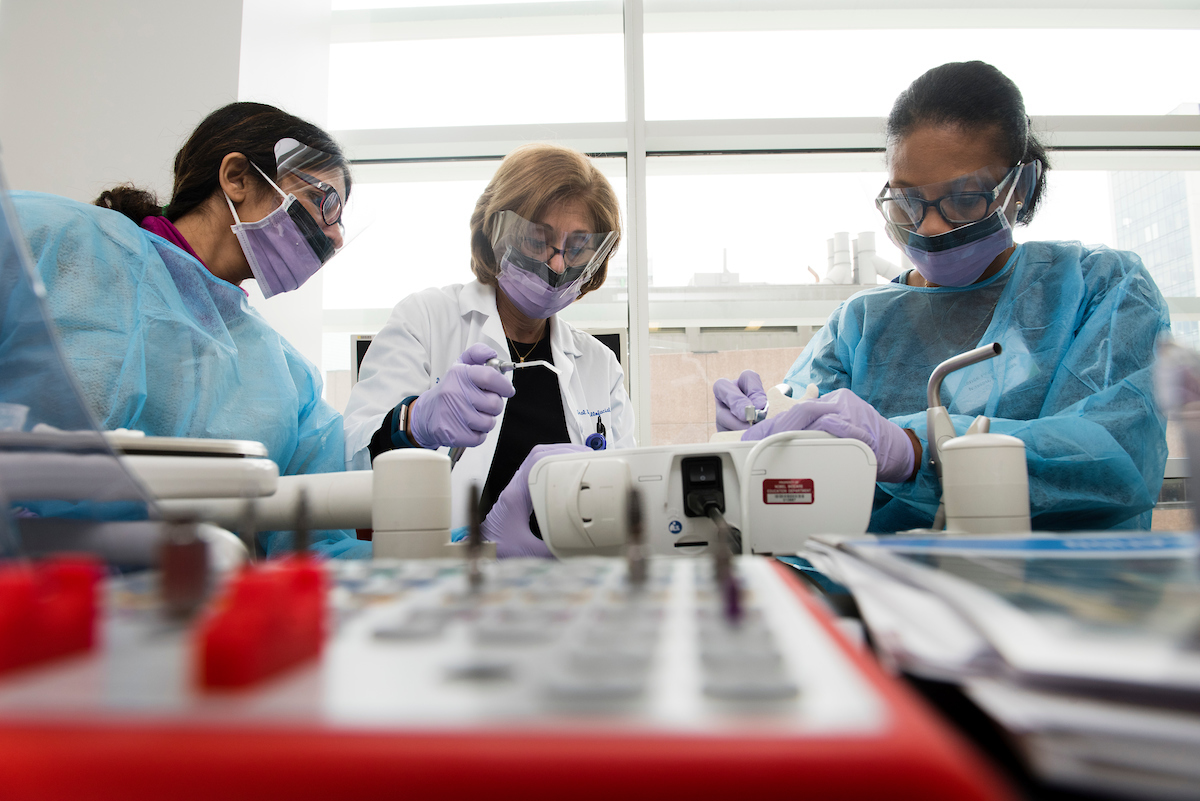TEACHING IN A CLINIC SETTING

A clinical setting provides a unique hands-on learning environment preparing professional students across many disciplines. The fast paced environment of a clinic also can present unique challenges for teaching and learning.
Current research shows that the most effective clinical teachers make extra efforts to encourage participation, problem-solving, integrate basic and clinical knowledge with deliberate practice, while providing frequent feedback and close supervision. The following key principles are based on results from studies of effective clinical environments that promote student learning.
- Support a positive learning environment. Anxiety inhibits one’s ability to learn. To support and enhance student learning. create a welcoming environment by being accessible, showing enthusiasm for teaching, and sharing your own enthusiasm to learn. Another way that teachers can guide students’ development is by fostering a climate of mutual respect. In this collaborative and supportive setting, medical mistakes can be identified quickly. This practice allows students to develop the ability to identify and correct their actions. The learning community helps students become socialized into the profession, and develop their understanding of professionalism in a clinical setting.
- Provide clarity about what is to be learned and why. Students are better able to organize and activate information when they understand the relevance of the material they are learning. When you explain the purpose of activities, you let students know what they will be learning and how it will be useful to them in the future to increase their intrinsic motivation. Unclear expectations of performance increase student anxiety, and decrease their ability to learn effectively. To counter this, take a little time to articulate learning objectives for each rotation.
- Purposefully model effective thought processes, behaviors, skills and attitudes. Students watch faculty and staff for cues as to how to act. They absorb everything from the way you greet people in the morning to the attention you pay to each speaker during rounds. As you conduct your work in the clinic, you can label important aspects of behaviors, skills and attitudes, and then discuss with your students how they might enact these. Articulate the reasoning behind your process and use discussions to help students understand the impact of professional actions and decisions.
- Create opportunities for students to practice key thought processes, activities, skills and attitudes. Scaffolding tasks for learners to experience initial success helps to creates a positive environment. This includes providing brief guidance in the early periods of practice, and moving the student towards evaluating their own performance. You can encourage students to explore new knowledge and skills, and ask them to identify and explain key ideas. As students gain experience you can move on to higher order reflective questions, and to promoting discussions about diagnostic or treatment options. Finally students can cultivate a sustainable practice of critical reflection for each clinical experience.
- Actively supervise student performance and provide constructive feedback. While faculty struggle to find time to provide feedback and worry about the emotional response from students, effective feedback improves students’ motivation, increases their self-assessment skills and clinical performance. Feedback is essential for student learning in the clinic. The most effective feedback is both reinforcing (saying what they’re doing well) and corrective (pointing out specific areas for improvement). Start with students perceptions of their own performance. Then, frame your feedback with your own factual, descriptive and positive comments, followed by suggestions. These conversations guide student development. This exposure to meaningful feedback both improves students’ future performance and furthers their ability to self-assess.
Tufts Faculty Blog Posts
- Clinical Teaching Tip: Critical Reflection (Tufts Faculty Blog)
- Simulating Clinical Encounters in an Occupational Therapy Class (Tufts Faculty Blog)
- Using Video in the Clinical Reasoning Classroom (Tufts Faculty Blog)
From the Literature
- The Clinical Teaching Perception Inventory is a tool to reflect on one’s own perception of an effective clinical teacher, an important practice for anyone looking to improve their teaching.
- How to Write Well-Defined Learning Objectives (Chatterjee & Corral 2017, Journal of Education in Perioperative Medicine)
- Making the Most of the First Five Minutes: The Clinical Teaching Moment (Smith and Lane 2015, Journal of Veterinary Medical Education)
- Teaching in daily clinical practice: how to teach in a clinical setting (Ruesseler & Obertacke 2011, European Journal of Trauma and Emergency Surgery)
